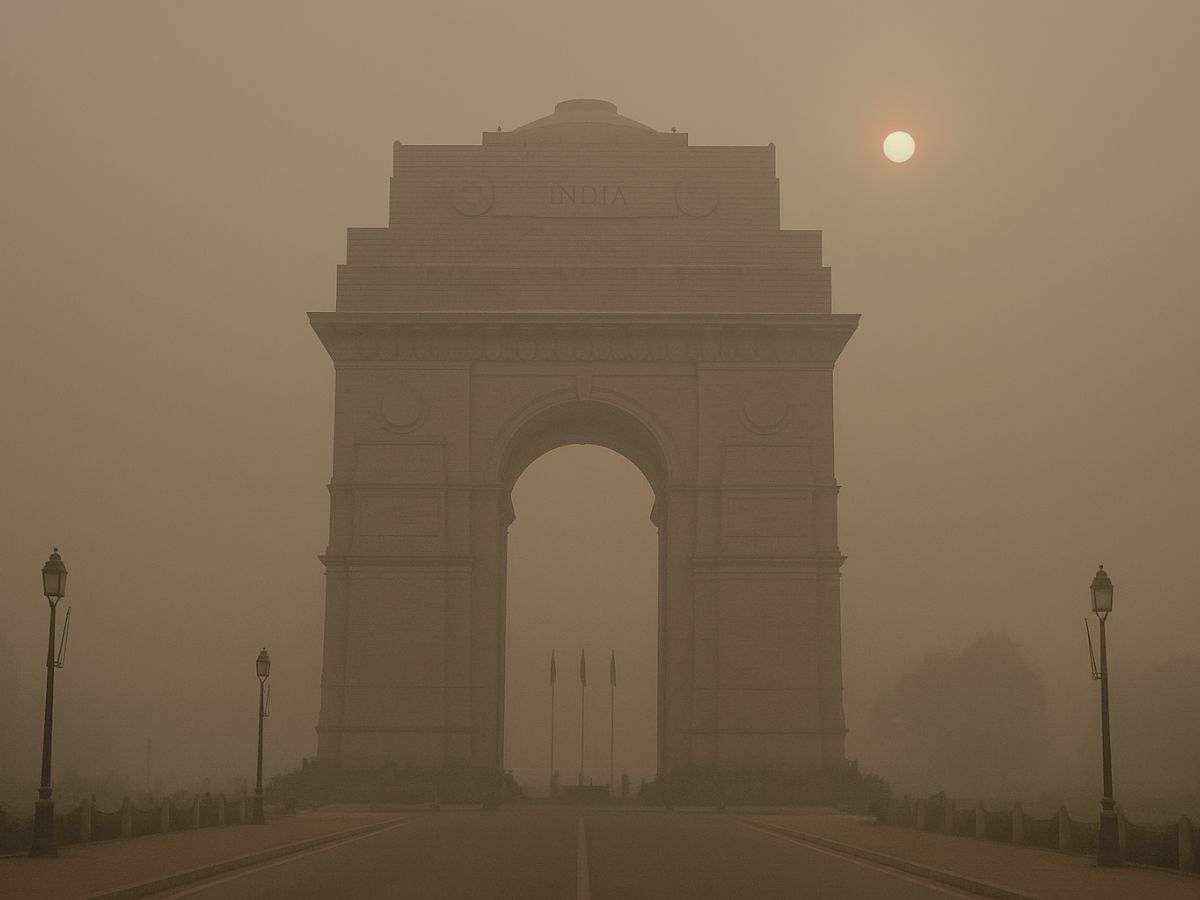Top Stories
Delhi’s Air Quality Plummets on Diwali Night as Fireworks Ignite Pollution

On the night of October 21, 2025, Delhi experienced a severe deterioration in air quality as residents celebrated Diwali with extensive fireworks. The Central Pollution Control Board (CPCB) reported that 36 of the 38 air quality monitoring stations in the national capital recorded alarming pollution levels, with many areas slipping into the ‘red zone’.
The overall Air Quality Index (AQI) for Delhi reached a staggering 344, categorizing it as ‘very poor’. Notably, four key monitoring stations reported even worse conditions, with Wazirpur at 423, Dwarka at 417, and both Ashok Vihar and Anand Vihar hitting 404, all classified as ‘severe’. The city’s 24-hour average AQI also reflected a decline, increasing from 326 the previous day to 345.
Forecasts Predict Continued Pollution Challenges
Experts warn that conditions may worsen in the coming days due to stagnant winds and lingering smog from the Diwali celebrations. Forecasts from both the Indian Meteorological Department (IMD) and the Indian Institute of Tropical Meteorology (IITM) suggest that the AQI may dip further into the ‘severe’ category on October 22 and 23.
The Decision Support System (DSS) attributed approximately 15.6% of the city’s pollution to transport emissions and industrial activities, with this figure rising to about 23.3% on Diwali night. In response to the deteriorating air quality, the Commission for Air Quality Management (CAQM) had already put in place Stage II of the Graded Response Action Plan (GRAP), which restricts certain industrial operations and construction activities in Delhi and the National Capital Region (NCR).
The CPCB categorizes AQI levels as follows: 0–50 is ‘good’, 51–100 is ‘satisfactory’, 101–200 is ‘moderate’, 201–300 is ‘poor’, 301–400 is ‘very poor’, and 401–500 is ‘severe’. Despite a Supreme Court ruling allowing the use of green firecrackers only from 20:00 to 22:00, many areas of the capital witnessed extensive use of traditional fireworks late into the night, exacerbating the pollution crisis.
Public Health Concerns and Safety Measures
As visibility decreased and health risks escalated, officials strongly advised vulnerable populations—including children, the elderly, and individuals with asthma—to stay indoors. Those who must venture outside are encouraged to wear N95 masks and utilize air purifiers to mitigate exposure to toxic air.
The ongoing air quality issues in Delhi highlight the urgent need for effective measures to address pollution, particularly during festive occasions when fireworks are commonly used. As the city grapples with these challenges, the health implications for its residents remain a pressing concern.
As authorities continue to monitor the situation, the long-term effects of such high pollution levels on public health and the environment will be closely scrutinized, emphasizing the importance of sustainable practices and adherence to air quality regulations.
-

 World3 months ago
World3 months agoSBI Announces QIP Floor Price at ₹811.05 Per Share
-

 Lifestyle3 months ago
Lifestyle3 months agoCept Unveils ₹3.1 Crore Urban Mobility Plan for Sustainable Growth
-

 Science3 months ago
Science3 months agoNew Blood Group Discovered in South Indian Woman at Rotary Centre
-

 Sports3 months ago
Sports3 months agoBroad Advocates for Bowling Change Ahead of Final Test Against India
-

 World3 months ago
World3 months agoTorrential Rains Cause Flash Flooding in New York and New Jersey
-

 Top Stories3 months ago
Top Stories3 months agoKonkani Cultural Organisation to Host Pearl Jubilee in Abu Dhabi
-

 Science3 months ago
Science3 months agoNothing Headphone 1 Review: A Bold Contender in Audio Design
-

 Top Stories3 months ago
Top Stories3 months agoAir India Crash Investigation Highlights Boeing Fuel Switch Concerns
-

 Sports3 months ago
Sports3 months agoCristian Totti Retires at 19: Pressure of Fame Takes Toll
-

 Business3 months ago
Business3 months agoIndian Stock Market Rebounds: Sensex and Nifty Rise After Four-Day Decline
-

 Politics3 months ago
Politics3 months agoAbandoned Doberman Finds New Home After Journey to Prague
-

 Top Stories3 months ago
Top Stories3 months agoPatna Bank Manager Abhishek Varun Found Dead in Well









